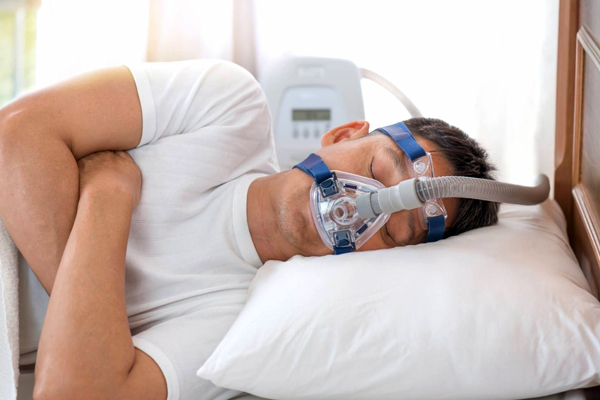Sleep Study

Sleep Study
What is a Sleep Study?
A sleep study, also known as polysomnography, is a non-invasive diagnostic test used to assess and monitor various aspects of sleep. It is commonly performed to diagnose sleep disorders, such as sleep apnea, insomnia, restless legs syndrome, narcolepsy, and periodic limb movement disorder. By analyzing sleep patterns, breathing, heart rate, and brain activity, a sleep study helps identify potential disruptions in a person's sleep cycle that can affect overall health and well-being.
How Does a Sleep Study Work?
A sleep study is typically conducted in a sleep center or laboratory, but in some cases, home-based sleep studies may be an option. The process involves the following steps:
-
Preparation: Before the study, patients are asked to avoid caffeine, alcohol, or naps on the day of the test. The study is usually scheduled overnight to capture natural sleep patterns.
-
Sensors and Monitoring: During the sleep study, various sensors are attached to the patient's body to monitor physiological functions throughout the night:
- Electroencephalogram (EEG): Measures brain activity.
- Electrooculogram (EOG): Tracks eye movements.
- Electromyogram (EMG): Detects muscle activity.
- Electrocardiogram (ECG): Monitors heart rate and rhythm.
- Oximetry: Measures blood oxygen levels.
- Airflow Sensors: Tracks breathing patterns and airflow.
- Respiratory Effort Bands: Detects chest and abdominal movement during breathing.
-
Data Collection: As the patient sleeps, the sensors collect data on sleep stages, breathing patterns, oxygen levels, muscle activity, and heart rate. Technicians monitor the process remotely to ensure accurate data collection.
-
Analysis and Diagnosis: After the study, the data is analyzed by a sleep specialist to diagnose any sleep disorders and recommend treatment.
Common Reasons for a Sleep Study
A sleep study is often recommended when a person exhibits symptoms that may indicate a sleep disorder. Some of the common reasons for undergoing a sleep study include:
- Obstructive Sleep Apnea (OSA): Characterized by pauses in breathing during sleep, OSA is a condition where the airway becomes blocked, leading to disrupted sleep and low oxygen levels. A sleep study can diagnose OSA and determine its severity.
- Chronic Insomnia: Persistent difficulty in falling or staying asleep may require a sleep study to assess underlying causes and patterns that contribute to insomnia.
- Restless Legs Syndrome (RLS): An uncomfortable sensation in the legs, usually occurring at night, that can disrupt sleep. A sleep study can help evaluate movement patterns during sleep.
- Narcolepsy: A neurological disorder that causes excessive daytime sleepiness and sudden episodes of sleep. A sleep study, combined with a multiple sleep latency test (MSLT), helps diagnose narcolepsy.
- Parasomnias: Abnormal sleep behaviors such as sleepwalking, night terrors, or REM sleep behavior disorder can be evaluated with a sleep study to understand their occurrence.
Benefits of a Sleep Study
- Accurate Diagnosis: A sleep study provides comprehensive and detailed information on sleep stages, breathing, and other physiological functions, allowing for accurate diagnosis of sleep disorders.
- Tailored Treatment Plans: Once the diagnosis is established, healthcare providers can develop personalized treatment plans, such as continuous positive airway pressure (CPAP) therapy for sleep apnea or behavioral therapy for insomnia.
- Improved Sleep Quality: Addressing sleep disorders through the insights gained from a sleep study can improve sleep quality, leading to better overall health and enhanced cognitive function.
- Prevention of Health Complications: Sleep disorders, particularly sleep apnea, are linked to various health conditions, such as hypertension, heart disease, stroke, and diabetes. Early diagnosis and treatment can prevent these complications.
Types of Sleep Studies
- Polysomnography (PSG): The standard overnight sleep study conducted in a laboratory that monitors multiple physiological variables, including brain waves, muscle tone, heart rate, and breathing.
- Home Sleep Apnea Test (HSAT): A simplified version of a sleep study, usually used to diagnose obstructive sleep apnea. It involves fewer sensors and is performed at home, making it more convenient for patients.
- Multiple Sleep Latency Test (MSLT): Conducted the day after a polysomnography, MSLT measures how quickly a person falls asleep during the day and is often used to diagnose narcolepsy.
- Maintenance of Wakefulness Test (MWT): This test evaluates a person's ability to stay awake during the day, typically used to assess excessive daytime sleepiness.
What Happens After a Sleep Study?
After the study, the sleep specialist reviews the results and diagnoses any sleep disorders. Based on the findings, a treatment plan may be recommended, which could include:
- CPAP Therapy: For patients with obstructive sleep apnea, CPAP is a common treatment that involves wearing a mask during sleep to deliver continuous air pressure, keeping the airway open.
- Lifestyle Changes: For conditions like insomnia or mild sleep apnea, weight loss, smoking cessation, or adjusting sleep habits may be recommended.
- Medications: In some cases, medications may be prescribed to manage sleep disorders such as narcolepsy or restless legs syndrome.
- Cognitive Behavioral Therapy for Insomnia (CBT-I): A structured program that helps individuals address the thoughts and behaviors that interfere with sleep.